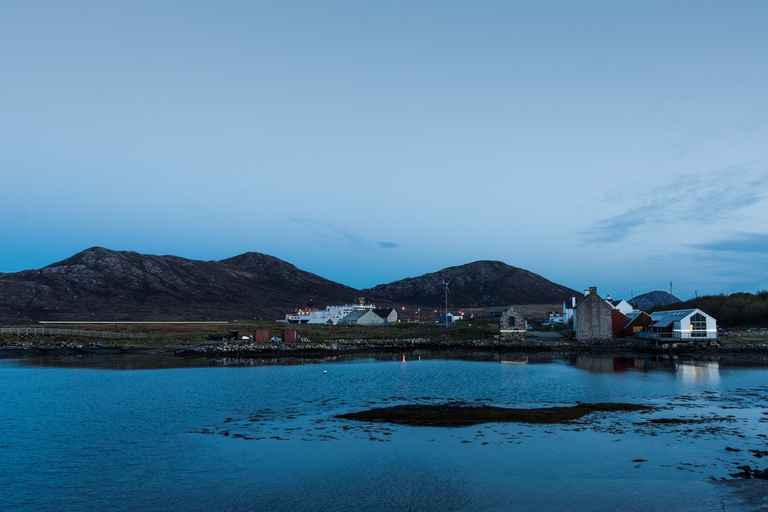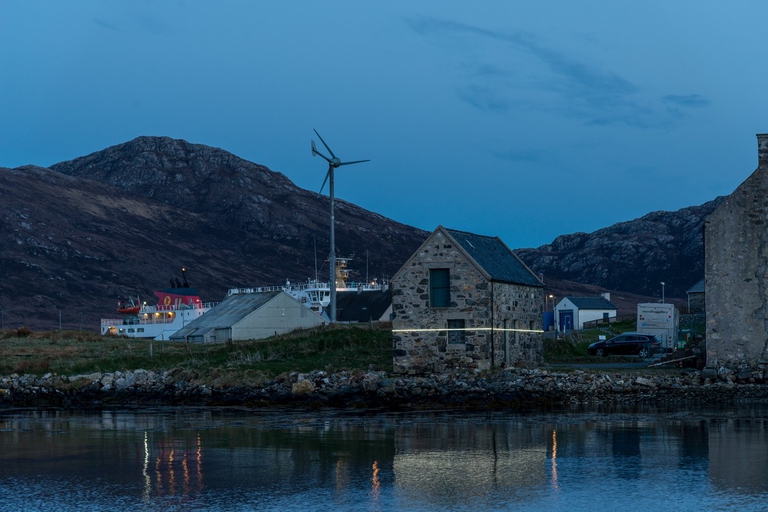
After a landslide led to twelve deaths on the island of Ischia, questions have been raised about the impacts of illegal building, tourism, and climate change.
Lines (57° 59’N, 7° 16’W) is an installation located in the Outer Hebrides, Scotland, that shows the future we could face due to global warming: underwater. But it’s also a call to act to avoid that this scenario becomes reality.
Sea level rise. These words most probably make our mind travel to remote places, from a warmer Arctic with its melting glaciers to small islands in the middle of the ocean that are the first to be affected. As for our European continent we know from some projections that coastal cities may be flooded at some point, like the romantic Venice, but it mostly remains an intangible scenario to many. Yet the consequences of global warming are already happening and are ever more visible all around the world, even in our backyard. So, that tiny island in the middle of the ocean is actually a group of Scottish islands, in the United Kingdom.
To make the effects of a changing climate more visible, there’s a line running along the coasts of the Outer Hebrides, off the coats of western Scotland. It marks the points the tide could reach due to sea level rise: the windows of houses, grasslands over ports and fences. It’s the installation called Lines (57° 59’N, 7° 16’W), designed by Finnish artists Pekka Niittyvirta and Timo Aho.
Through this installation, people can perhaps better visualise and relate to the reality that might be in not so distant future to come.Pekka Niittyvirta and Timo Aho, artists
With the aim of exploring the catastrophic impact of our relationship with nature and its long-term effects, the installation aims to shed a light on how rising sea levels would impact coastal areas, its inhabitants and land in the future. “We started the project within the context of physical positions of seaside communities. It quickly took turn towards the causality of climate change and of tidal movements,” Niittyvirta and Aho told us.
In particular, the impact on low-lying islands like the isle of Uist, in the Outer Hebrides. The life on the island has in fact already been affected by this phenomenon. An example is the Taigh Chearsabhagh museum and arts centre – where the installation has been placed – which can’t develop its own existing site anymore due to storm surge. The installation Lines (57° 59’N, 7° 16’W) isn’t static; it interacts with the changing tide and thanks to the use of sensors it activates the LED lights during high tide.
Art has a potential to convey complex ideas, concepts and scientific data in a powerful way that other mediums, like words or graphs fall short of.Pekka Niittyvirta and Timo Aho, artists
The lines of light thus represent a reminder of what we could face if we don’t act, immediately and rapidly, for the climate. Considering that 8 out of the world’s 10 biggest cities are located near coasts and that sea levels could rise 50 centimetres by 2100 according to Nature, hundreds of thousands of people in the world will be vulnerable to rising sea levels. On the other hand, this installation is a call to act to avoid that these Scottish island, which are a symbol of all islands and coastal communities in the world, are submerged and disappear for good.
Siamo anche su WhatsApp. Segui il canale ufficiale LifeGate per restare aggiornata, aggiornato sulle ultime notizie e sulle nostre attività.
![]()
Quest'opera è distribuita con Licenza Creative Commons Attribuzione - Non commerciale - Non opere derivate 4.0 Internazionale.
After a landslide led to twelve deaths on the island of Ischia, questions have been raised about the impacts of illegal building, tourism, and climate change.
Not much snow, peaks of 19 degrees Celsius in Norway and even 28 degrees in France: official data confirms the anomalously high temperatures of this past winter.
Ocean warming has risen to record highs over the last five years: just in 2019 the heat released into the world’s oceans was equivalent to that of 5-6 atomic bombs per second. The culprit, no doubt, is climate change.
What did Greta Thunberg tell participants at the 2020 World Economic Forum in Davos? Once again, the Swedish activist underlined the total lack of concrete solutions to the climate crisis presented by leaders so far.
The list of human and animal victims of the Australia wildfires keeps growing – one species might already have gone extinct – as the smoke even reaches South America.
Kivalina is located on a small island once guarded by sea ice, which is now melting due to global warming. While the sea threatens to wipe the village off the face of the Earth, its inhabitants refuse to give up their lives and traditions.
Thanks to activists, the voice of the world’s peoples resounded through the COP25 like an alarm bell. Governments didn’t reach the results they demanded, but their cries and messages were stronger than ever, reaching even those who weren’t in Madrid.
Climate change poses a risk for millions. However, women are the most vulnerable to its negative consequences: a few simple considerations by the Italian Climate Network help us perceive the global implications of this.
The COP25 ended two days late and with very few steps ahead made. Climate negotiations in 2020 will be an uphill battle as political will clearly seems to be lacking, once again.









